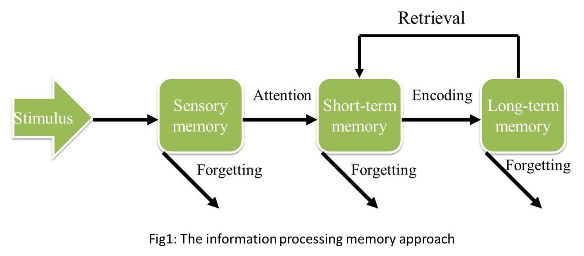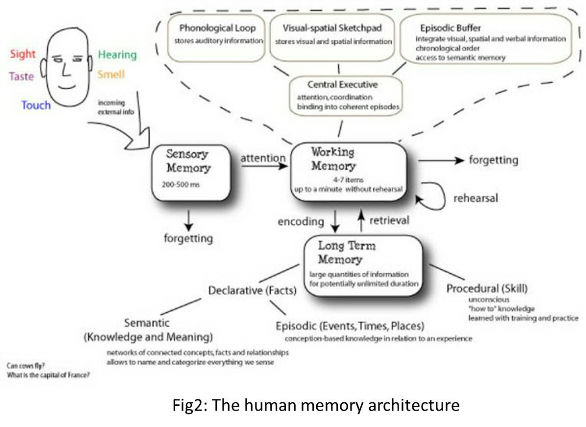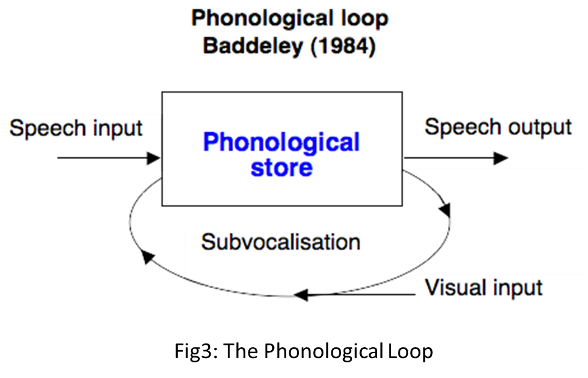PROPOSAL
HUMAN MEMORY:
 Our memory is the process by which information is retained for later use. The basic process by which information is processed follows this format: information is acquired and encoded, which leads to storage in the brain, which leads to the possibility of later retrieval and the possibility of eventually forgetting the information.
Our memory is the process by which information is retained for later use. The basic process by which information is processed follows this format: information is acquired and encoded, which leads to storage in the brain, which leads to the possibility of later retrieval and the possibility of eventually forgetting the information.
Today, cognitive psychologists like to compare the human mind to a computer and memory to an information-processing system.
Within this information-processing memory approach, three memory representation have been considered:Sensory Memory, Short-term Memory and Long-term Memory.
SIS: The Sensory Information System is a transient representation of what is sensed by our sensory organs, holding literal 'copies'. A sensory memory is believed to exist for each of our senses. Ignored information is lost soon and new perceptual data replaces old information. Attention pushes a representation from the Sensory Memory to the Short-term Memory, thus leading to narrowing down of the stimuli that passes into the Short-term Memory.
STM: Short-term Memory is a limited capacity store in which information is stored for a very short duration usually between 12 to 30 seconds. It's limited capacity can often be increased by chunking or grouping of stimuli in a single representation(Ericsson & Chase (1982)). This kind of memory is often referred to as the working memory which includes separate systems for verbal and visual systems. The verbal material encoding system also called the Phonological loop is the focus of this project.
LTM: Long-term memory can store a huge quantities of information for longer periods of time. Information goes from the short-term store to the long-term store by the process of repetition or rehearsal. Science writer Isaac Asimov once estimated that LTM takes in a quadrillion separate bits of information in the course of a lifetime. Mathematician John Griffith estimated that, from birth to death, the average person stores five hundred times more information than the Encyclopedia Britannica. When people talk about memory, long-term memory is typically what they have in mind.

Fig2: The human memory architecture
Image taken from http://softwarecreation.org/2008/the-programmers-brains-at-work-understanding-the-software-system/
WORKING MEMORY
 Baddeley proposed a model of the working memory consisting of a central executive and 3 slave systems: The phonological loop, The episodic Buffer and The Visuo-Spatial Sketchpad dedicated to articulatory, episodic and visual memory and related processing respectively.
Baddeley proposed a model of the working memory consisting of a central executive and 3 slave systems: The phonological loop, The episodic Buffer and The Visuo-Spatial Sketchpad dedicated to articulatory, episodic and visual memory and related processing respectively.
According to Baddeley(1986,1992) and Sperling(1967), The phonological loop is formed of 2 components: The Phonological Store that stores memory traces in the form of phonological codes and is subject to rapid decay; and the Articulatory Rehearsal Component that can revive memory traces by means of rehearsal.
Several effects that are important with respect to the Phonological Loop are:
Phonological similarity effect: Similar sounding words are difficult to recall as compared to different sounding words owing to less number of distinctive features during storage in the Phonological Store for similar sounding words and hence, leading to difficult retrieval.
Word Length Effect: The longer the word length, the more difficult is their storage and retrieval. This is because the rehearsal in the the Articulatory Rehearsal Component will take a longer time and hence poorer performance.
Articulatory Suppression: Uttering of irrelevant words leads to disruption of the rehearsal process.
Several experiments and neuropsychological data have verified the functional independence of the above mentioned components of the Phonological Loop. For example: the phonological similarity effect and the word length effect have been shown not to interfere with each other. This proves the functional independence of the components as the phonological similarity effect is based on the The Phonological Store whereas the word length similarity effect is based on articulatory rehearsal.
PROPOSAL
This project aims at understanding whether the material stored in the Phonological Store in the form of Phonological codes influences other articulatory tasks.
HYPOTHESIS:
Given the evidence that the two components of the Phonological Loop are functionally independent, a task involving one should not be influenced by the contents of the other. However, any articulatory task will require storage of the audio input in the Phonological Store and further rehearsal and processing requires the articulatory control component. Thus, it is hypothesized that the Phonological Store material will influence an Auditory Control task. This will be tested by giving the test subjects certain items to be store in their working memory followed by an audio input which will have to be interpreted. Bases on the subjects interpretation of the input with varying the Phonological store material, the effect will be observed.
The project also aims at testing whether the subject can consciously control the influence of the stored material on the task at hand. This will be done by instructing the subject not to focus on certain aspects of the audio input that relate to contents of the Phonological Store.
In a nutshell, the project aims at looking at the effects of the Phonological Store material on an articulatory task in the light of the effects of the Phonological loop i.e. Phonological similarity effect, Word Length Effect and Articulatory Suppression.
REQUIREMENTS FOR THE PROJECT
The experimental requirements are:
- 20-25 random subjects not having a cultural or social influence or bias of any kind. Age group 18-25 yrs.
- An interface that will give the desired inputs to the subject as well as record statements of the subjects.
- An environment free of external noise that might interfere with the experimental results.
IMPORTANCE OF THE STUDY
The current study will help enhance our understanding of the articulatory working memory. This understanding is, in turn, crucial for duplicating such a system for computational purposes.